“Your most unhappy customers are your greatest source of learning.”
Bill Gates
Wise words from a man who knows a great deal about building successful businesses!
Businessmen worldwide need access to candid and unfiltered customer insights. However, in my experience, traditional feedback mechanisms often fall short, leaving crucial information unspoken and opportunities for improvement undiscovered.
Here, anonymous surveys provide your customers with a safe haven. What is anonymous feedback? It encourages honest responses and helps uncover issues and opportunities you might never have seen coming.
However, which paid or free anonymous feedback tools are the best for the purpose? And how can you ensure anonymity while obtaining valuable data? This guide has the answers.
What is an Anonymous Feedback Tool?
An anonymous feedback tool is a platform that lets people share their honest opinions without revealing their identities. Anonymous surveys are fantastic for encouraging people to be completely honest.
Whether employees give feedback on their work environment, customers share their experiences, or students evaluate their courses, anonymity helps ensure the data collection process is genuine and unfiltered.
Organizations use anonymous feedback tools to get real insights into what’s working and what’s not. By keeping responses confidential and candid, these tools help uncover issues and opportunities that might not surface otherwise.
Why Does Anonymous Feedback Matter to Businesses?
Many organizations struggle to get candid feedback from their employees and customers, which can significantly hinder their ability to make the necessary improvements. Anonymous feedback can help organizations overcome this and other challenges.
Here are some reasons why anonymous feedback matters:
1. Encourages Honesty: When people give feedback without revealing their identity, they are likelier to be honest and provide valuable information that they might not disclose otherwise. For instance, if an employee is unhappy about working conditions or has a complaint about a particular process or person, they may not feel comfortable disclosing this information directly.
With anonymous feedback, they feel safe while sharing such feedback without the fear of any repercussions.
2. Helps in Identifying Trends & Patterns: Anonymous feedback helps reveal recurring themes or issues a company might not have been aware of. It successfully identifies problem areas that require improvement and helps the organization better understand the needs of its customers or employees.
3. Boosts Employee Engagement: Anonymous feedback allows customers or employees to voice their opinions, making them feel valued and heard. For example, it gives employees the confidence to participate in decision-making and improves their working environment, boosting employee engagement and satisfaction.
Top 15 Anonymous Feedback Tools to Consider in2025 (Free & Paid)
Paid Anonymous Feedback Tools (With Free Plans Available)
1. Qualaroo
If you need in-app anonymous feedback, Qualaroo is the tool for you. Qualaroo collects responses anonymously by default (anonymity can be disabled using a javascript API). Its IBM Watson-powered sentiment analytics allows you to analyze even open-ended survey responses to extract customer sentiments and organize the information categorically.
Qualaroo’s unobtrusive, in-app surveys allow you to gather feedback directly from users as they interact with your app. Its advanced targeting capability is one of the best I have seen. It enables you to reach the right users at the right time, greatly enhancing the quality of feedback.
Best for: Intuitive reporting, pop-up surveys, advanced targeting, and anonymous surveys.
What you will like:
- Quick and easy setup process for collecting feedback.
- Customized surveys for anonymous feedback.
- Pre-designed templates for anonymous surveys such as NPS, CSAT, CES, UES, and more.
- Various question types, including open-ended, closed-ended, dichotomous, Likert, and MCQ.
- Branching logic to improve feedback relevancy and data quality.
- Scheduling feature for surveys to appear at a specific time or random intervals.
- Quick feedback with Nudge™ pop-up surveys.
- A non-intrusive way to check customer pulse.
- Ability to embed surveys in design templates for testing and feedback collection.
What you may not like:
- No downloadable or on-premise version.
- The dark user interface option is not yet available.
- There is no dedicated account manager for the free plan, unlike paid.
Price: Starts at $19.99/month. Forever free version is available with all the premium features.
2. Survicate
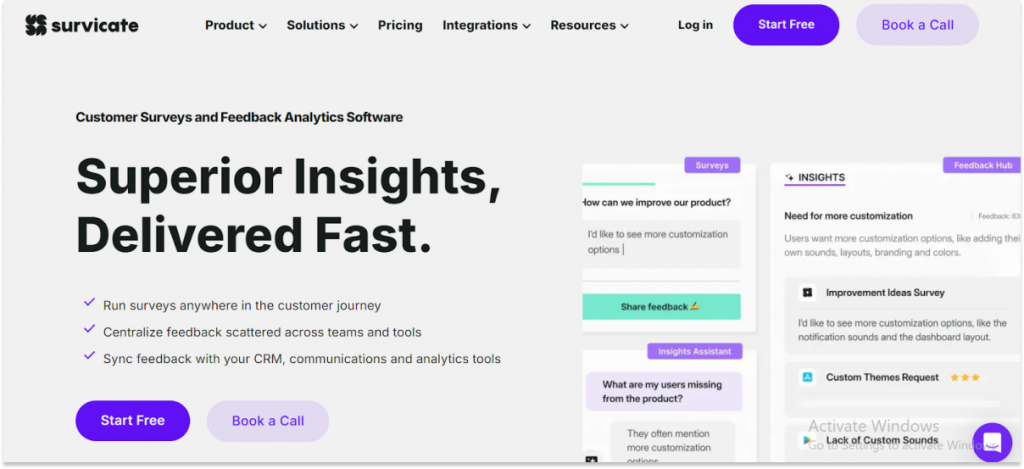
I was looking for a simple tool that would let me conduct anonymous surveys without too much hassle, and Survicate fit the bill perfectly. Ideal for businesses that need quick and straightforward feedback collection, its user-friendly interface is straightforward to navigate and allows users to design and launch surveys in no time.
Survicate also offers a variety of question types and customizable templates that helped me gather valuable insights quite quickly. Another noteworthy feature is its real-time feedback collection – it can be a game-changer if you need to analyze responses instantly and make timely decisions.
Best for: Gathering product feedback, measuring product satisfaction & NPS, and conducting user research.
What you will like:
- The drag-and-drop builder makes survey creation quick and effortless.
- A wide range of pre-made, customizable templates suited for various feedback needs.
- Instant response collection and analysis for timely insights.
- Integrates smoothly with tools like Slack, HubSpot, and Intercom, streamlining the workflow.
What you may not like:
- Limited advanced question types and logic features.
- Difficulty in testing and changing surveys.
Pricing: Starts at €99/month. Free plan available (only 25 survey responses per month).
3. Guusto
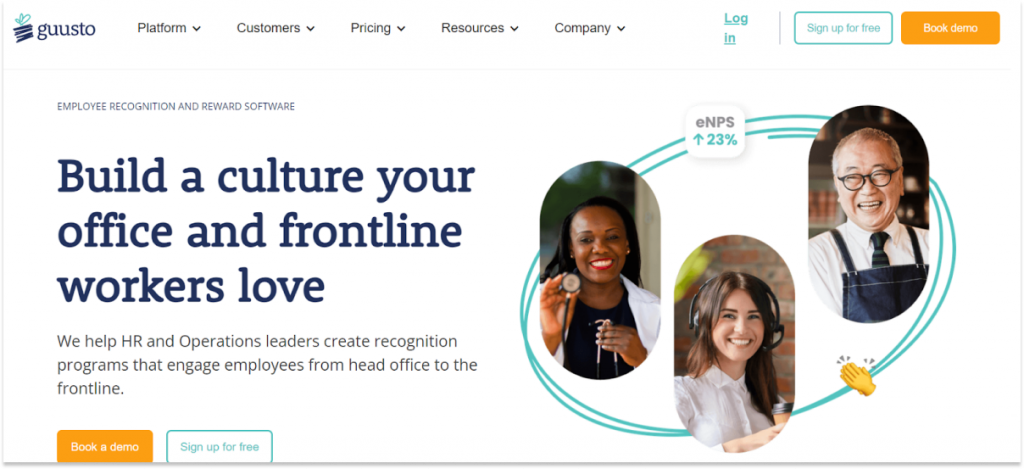
This anonymous feedback tool allows honest and constructive feedback to be shared safely and securely. Your team members can provide feedback to colleagues, managers, or leaders without fear of backlash or negative consequences.
Guusto provides a seamless way to acknowledge employee efforts through digital gift cards and rewards. It allows for instant recognition, ensuring that appreciation is timely and relevant.
Best for: Employee recognition and anonymous feedback.
What you will like:
- Comes with survey templates to help you get started quickly.
- Easy to customize surveys as per your company branding.
- Analyzes feedback data in real-time with easy-to-understand visual reports.
- Supports data privacy and protection with top-level security protocols.
What you may not like:
- Integrating Guusto with other HR tools might require additional effort, depending on your existing systems.
- Incentive options could be expanded more.
Pricing: Starts at $40/month + $6/mo per person. Free plan with limited features.
4. Zonka Feedback
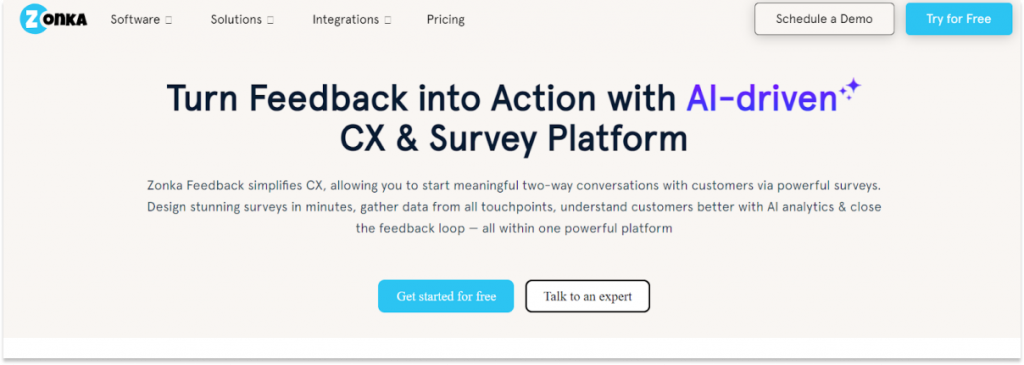
When it comes to gathering omnichannel anonymous feedback, Zonka Feedback truly excels.
Zonka Feedback’s strength lies in its ability to capture feedback from multiple touchpoints—be it email, SMS, web, or mobile. This omnichannel approach ensures a holistic understanding of your audience’s experiences.
The tool allows users to create tailored experiences through customizable online feedback survey templates and answer piping. It is also user-friendly and offers advanced features to analyze and act on feedback efficiently.
Best for: Omnichannel anonymous feedback.
What you will like:
- Offline surveys to collect feedback in offline mode
- Robust features, including a WYSIWYG survey builder, templates, survey logic, and answer piping
- Kiosk mode to collect feedback from customers or attendees at events and on-site
- You can collect responses anonymously and select which data to collect
What you may not like:
- The documentation leaves users wanting in terms of topic coverage
- Allows you to modify and customize surveys within a limit
Pricing: Starts at $49/month. Free plan available (only up to 1 user).
5. Typeform
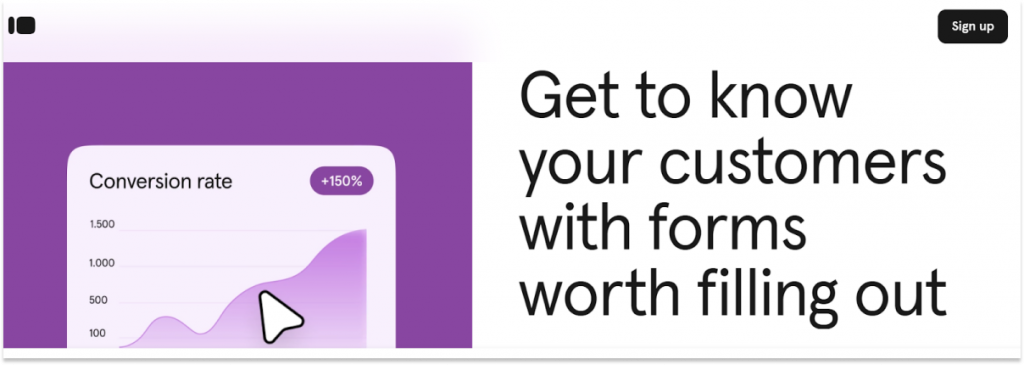
If you want a tool that lets you ask questions in an engaging, conversational format, Typeform is the tool for you. It has helped me collect feedback without making it monotonous. Result? My response rate skyrocketed. Typeform provides instant feedback, allowing you to analyze its performance instantly and tweak the questions in your next campaign.
The surveys in this tool are far from typical static questionnaires. Instead, they offer interactive engagement, making the experience more dynamic and enjoyable. You can also incorporate multimedia elements like images, GIFs, and videos to enhance the survey’s appeal.
Best for: Engaging feedback surveys.
What you will like:
- AI-powered surveys that require minimal inputs and manual handling.
- Built-in analytics dashboard and visually appealing reports for convenient data analysis.
- Mobile-friendly platform with advanced security measures and automation capabilities for a seamless experience.
- Supports multiple ways of sharing surveys by email, landing page, or a survey link to anyone interested.
What you may not like:
- Designing and editing forms is currently restricted to just desktop browsers.
- The one-question-at-a-time setup can be a limiting factor when cluster questions are required.
Pricing: Paid plans start at $25/month. Free plan available (only up to 10 responses).
6. JotForm
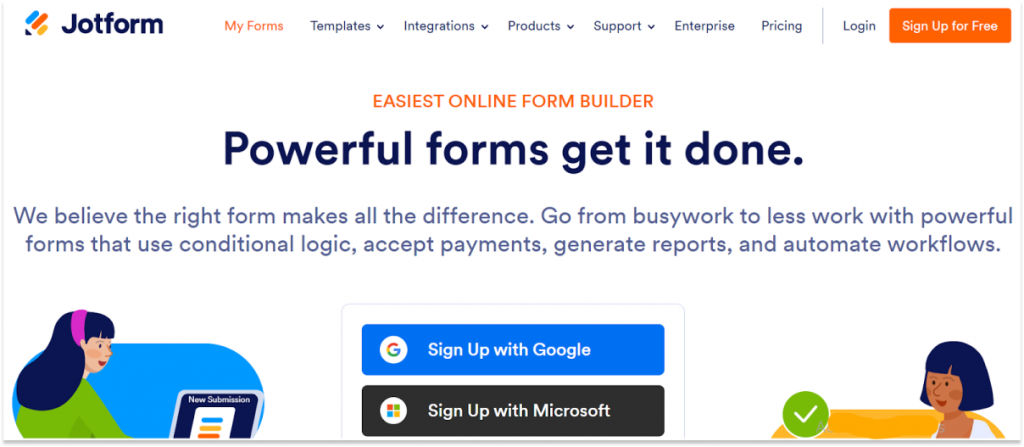
Among various tools showcased, JotForm stood out due to its impressive conditional logic capabilities. What impressed me the most was JotForm’s ability to create dynamic surveys that adapt based on respondents’ answers. This conditional logic feature ensures that each participant has a personalized experience, answering questions relevant to them.
This is particularly good for anonymous surveys because it allows you to ask sensitive questions without making respondents uncomfortable. The flexibility to hide or show questions based on previous answers ensures that participants only see questions pertinent to their experiences.
Best for: Conditional logic surveys
What you will like:
- Versatile, tailored survey creation with a drag-and-drop interface, extensive question types, and logical conditions.
- Mobile-friendly platform with advanced security measures and automation capabilities.
- Surveys can be customized using logos, fonts, and colors to match your brand identity.
- SSL data security to weed out spam responses or data leakage.
What you may not like:
- The tool has a steep learning curve.
- The free plan has submission and data export limits.
Pricing: Starts at $34/month. Free version available (up to 5 forms).
7. SurveyMonkey
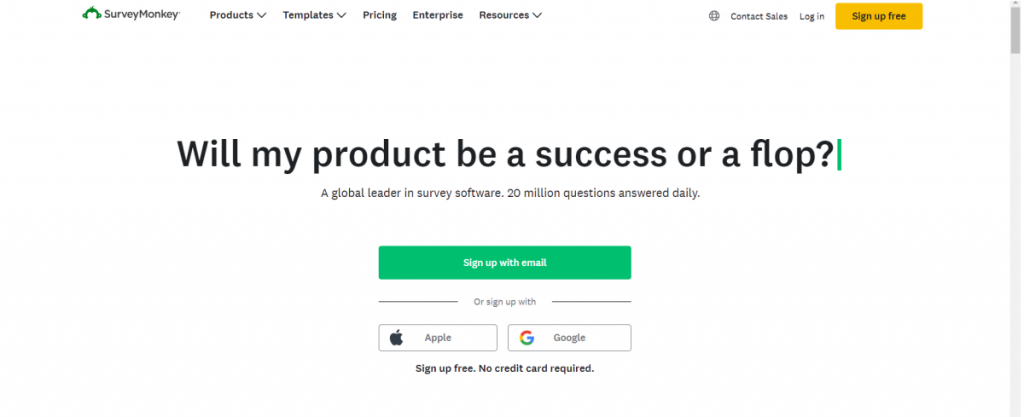
SurveyMonkey is one of the most recognized names in the online survey world. It provides a range of plans and features to cater to various data collection needs. Whether you’re conducting market research, checking in with customers, or gauging employee sentiment, SurveyMonkey provides a solid foundation for collecting and understanding valuable data.
While the free plan is great for testing the waters, SurveyMonkey’s real power shines through in its paid plans. You get advanced features like skip logic, question-and-answer piping, A/B testing, and custom branding to create more targeted and insightful surveys.
Best for: AI-powered survey tools and logic branching.
What you will like:
- Pre-written questions and customizable templates tailored to various use cases.
- Tools for basic data analysis and reporting, allowing you to visualize and understand your survey results.
- Advanced features like skip logic, question & answer piping, A/B testing, and more.
- Integrations are available with various third-party tools and platforms.
What you may not like:
- Paid plans can be relatively expensive.
- While functional, the interface may feel slightly outdated.
- Steep learning curve for advanced features.
Pricing: Starts at $25/user/month. Free plan available (up to 10 questions per survey).
8. Poll Everywhere

Poll Everywhere is a dynamic audience engagement platform that transforms presentations, meetings, and events into interactive experiences. It lets you create live polls, surveys, quizzes, and Q&A sessions to capture real-time feedback from your audience, regardless of their location. Participants can respond using smartphones, tablets, or laptops, fostering participation and collaboration.
Best for: Creating interactive quizzes and audience engagement.
What you will like:
- Various engaging question formats include multiple choice, word clouds, clickable images, and open-ended questions.
- Visually appealing response formats like bar charts, pie charts, and word clouds.
- Polls and surveys are directly integrated into your PowerPoint, Keynote, or Google Slides presentations.
What you may not like:
- Your polls and activities will include Poll Everywhere branding.
- The free plan lacks some advanced features available in paid plans.
- Advanced options like ranking or clickable images are restricted to paid.
Pricing: Starts at $10/month. Free plan available with limited features.
Paid Anonymous Feedback Tools
9. Assembly

Assembly is another stellar anonymous employee feedback tool. It stands out with its ability to analyze employee responses in real time. The instant feedback feature ensures that users can quickly identify and address issues, boosting team morale and productivity.
This free online anonymous feedback tool also helps you easily share forms with individuals or a larger audience, such as employees or dedicated departments, by adjusting the link access.
Best for: Instant employee feedback analysis
What you will like:
- Scan charts with real-time response data or download the data to a CSV file.
- Customizable forms and surveys as per your branding.
- Easy to rearrange and reorder questions.
- Optional anonymous response settings & secure data storage plus protection.
What you may not like:
- The interface can be glitchy at times.
- Can include more features in the basic plan.
Pricing: Starts at $2/member/month.
10. Mopinion
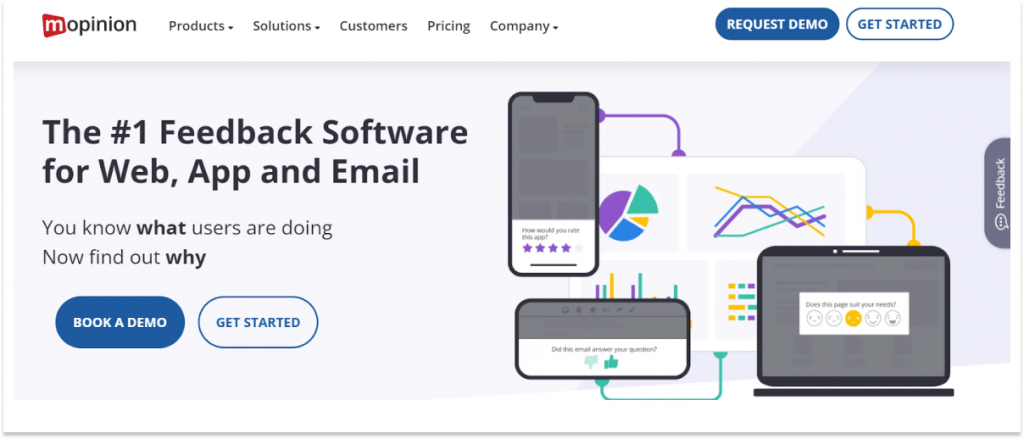
Mopinion’s unique focus on anonymous widget surveys helps seamlessly integrate into client websites and apps. What impressed me most is its ability to capture real-time feedback through customizable widgets placed anywhere on your site or app. These widgets are discreet yet highly effective in collecting valuable anonymous feedback.
Mopinion’s platform is versatile, allowing you to create widgets that can trigger based on user behavior, such as time spent on a page or specific actions taken. This ensures you gather feedback at the most relevant moments, providing deeper insights into user experiences and pain points.
Best for: Anonymous widget surveys.
What you will like:
- It is relatively simple to implement on a website
- The ability to collect feedback from multiple platforms with custom styling
- Complete control over the display and implementation of feedback modules
- Text analytics to extract meaning out of written communications
- Drag-and-drop functionality for easy configuration
What you may not like:
- Auto translation would be a welcome addition
- The tool is unable to duplicate forms easily
Pricing: Starts from $259/month.
11. WorkTango
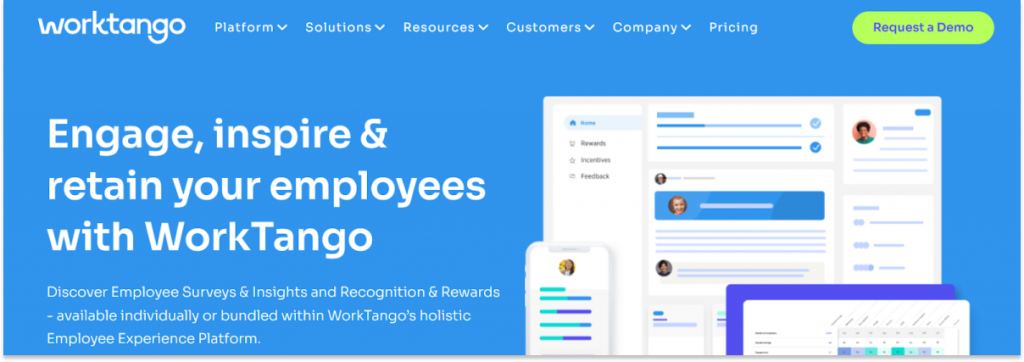
WorkTango ensures that employee feedback is always meaningful and actionable using standard templates like ‘Start, Stop, Continue’ and ‘Strengths and Opportunities.’ Employees also receive coaching and mentoring support, open communication, collaboration, and innovation.
The tool creates a safe space for employees to share their honest opinions and experiences. Its user-friendly interface and advanced analytics have made collecting and analyzing feedback more accessible.
Best for: Anonymous employee feedback.
What you will like:
- Confidential employee pulse surveys to gauge employee sentiment regularly.
- A comprehensive dashboard that visualizes key metrics and trends in employee feedback.
- Integrated employee recognition programs to boost employee morale and engagement.
- Custom reporting with detailed reports tailored to specific departments, teams, or issues for targeted action.
What you may not like:
- The product does not venture into other HR functions like performance management or HRIS.
- The reports are not intuitive or customizable.
Pricing: Available on request.
Free Anonymous Feedback Tools
12. Google Forms
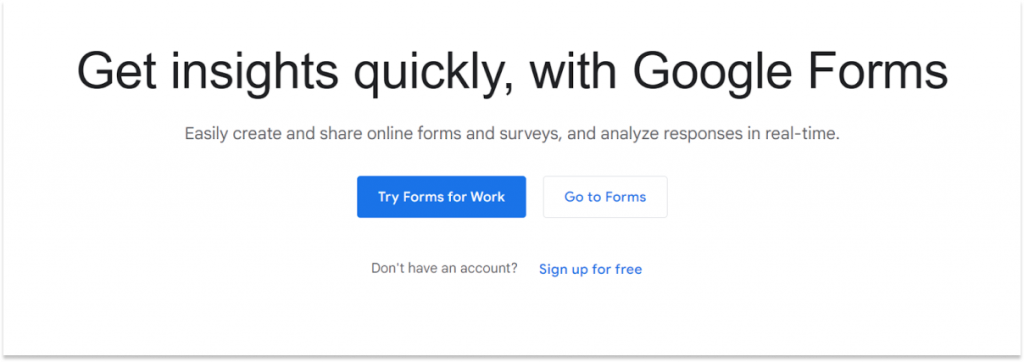
Google Forms stands out as the best choice among anonymous feedback tool online free. It is an excellent choice for those who need to create surveys quickly and efficiently without any cost. The tool is provided with all Google accounts and integrates readily with the Google ecosystem.
Google Forms also allows for seamless collaboration. You can share your survey with colleagues and work on it together in real time, which is perfect for team projects. Plus, the responses are automatically collected in Google Sheets, providing instant access to data and essential analysis tools.
Best for: Free and easy surveys.
What you will like:
- Templates and prebuilt form designs for various purposes, such as feedback, registration, quizzes, orders, and more.
- Different question formats include multiple-choice, short answer, checkboxes, linear scale, date, and time.
- You can customize your forms by adding images, videos, logos, colors, and fonts.
- Reports and analytics are automatically saved and displayed in Google Sheets as charts, graphs, and data summaries.
What you may not like:
- You will not be able to use the forms offline.
- Limited design and customization options.
Pricing: Free for anyone with a Google account.
13. Microsoft Forms
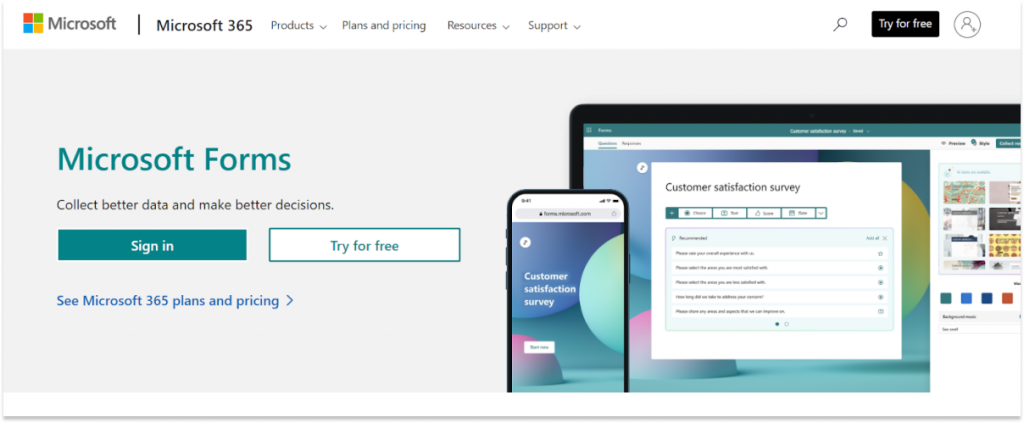
Microsoft Forms is your go-to tool when gathering information quickly and efficiently, especially if you’re already immersed in the Microsoft 365 ecosystem. It’s designed with simplicity in mind, so even those who aren’t tech-savvy can create surveys, quizzes, and polls without breaking a sweat.
One of the biggest perks of Forms is its seamless integration with other Microsoft tools. Imagine effortlessly exporting your survey results to Excel for further analysis or embedding a poll directly into a Teams channel for instant collaboration.
Best for: Creating quizzes and assignments and collecting feedback from students.
What you will like:
- Drag-and-drop UI makes it a breeze to build forms, add questions, and customize the look and feel.
- Seamless integration with other tools like Excel and Teams.
- Built-in accessibility features to ensure inclusivity for users with disabilities.
- Instant access to responses as they come in.
- Sharing is available via a link, QR code, or embedded directly into emails or web pages.
What you may not like:
- Design customization options are relatively basic.
- You might need to upgrade to a paid plan if you anticipate a large volume of responses.
Pricing: Free for everyone with a Microsoft account.
14. FreeOnlineSurveys
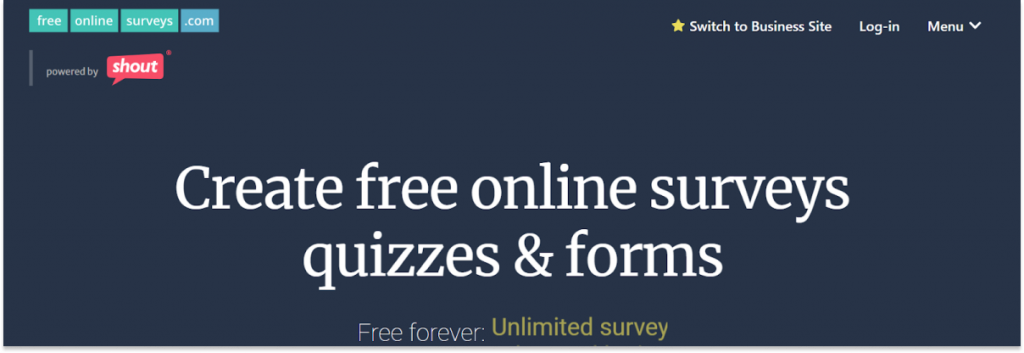
FreeOnlineSurveys provides a simple and accessible way to gather anonymous feedback, making it suitable for various use cases where privacy is paramount. While FreeOnlineSurveys may not offer the extensive features and customization options in some paid platforms, it provides a reliable and accessible way to collect valuable anonymous feedback.
You might need to look elsewhere if you’re looking for highly customizable designs, sophisticated branching logic, or seamless integrations with other platforms. But if you need a simple, straightforward way to collect anonymous feedback without spending a penny, FreeOnlineSurveys is a solid choice.
Best for: Free anonymous surveys and feedback.
What you will like:
- No restrictions on the number of questions or responses you collect per project.
- Export your collected data in both PDF and spreadsheet (CSV) formats.
- Intuitive and easy-to-navigate interface.
- Built-in email builder to craft professional-looking email invitations and track responses.
What you may not like:
- Question types and customization options are not as extensive as in some paid tools.
- Does not offer direct integrations with other platforms or tools.
- Each survey on the free plan is capped at 1,000 responses.
Pricing: Starts at $12.99/month. Forever free plan is available with limited features.
15. Free Suggestion Box
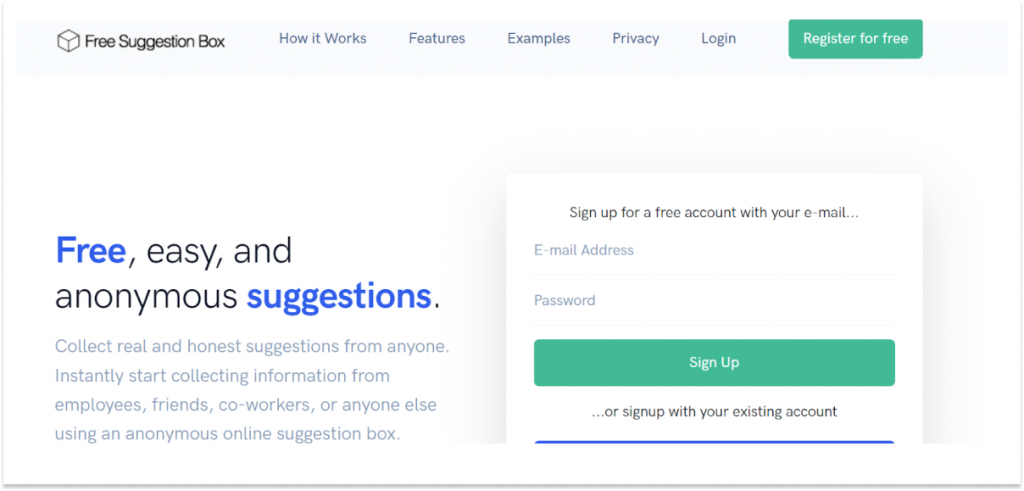
Free Suggestion Box serves a specific purpose effectively: providing a safe and accessible channel for anonymous feedback. While its simplicity is both its strength and limitation, it’s a valuable tool for smaller teams, organizations, or situations where anonymity is paramount.
It is an online tool that fulfills the traditional role of a physical suggestion box but with the added benefit of anonymity and digital accessibility. It lets you quickly gather feedback and suggestions from employees, customers, or any group without requiring them to reveal their identity.
Best for: Quick and easy feedback collection.
What you will like:
- No complex installation or technical knowledge is required to create a suggestion box.
- No hidden costs or limitations on the number of suggestion boxes you can create or the amount of feedback you can collect.
- Complete control over which suggestions are made public.
- Easily manageable and accessible from any device with an internet connection.
What you may not like:
- Lacks advanced survey features, analytics, or integration options.
- Doesn’t offer built-in mechanisms for responding to suggestions or tracking their progress.
- Branding and design customization options are limited.
Pricing: Not available.
Who Uses Anonymous Feedback Tools?
Many people and organizations use anonymous feedback tools to obtain more truthful and insightful feedback.
For example,
- Businesses: Companies use them to gather honest feedback from employees and customers. This helps in improving workplace culture, products, and services.
- Educational Institutions: Schools and universities use them to get candid student feedback about courses, teaching methods, and campus facilities.
- Healthcare Providers: Hospitals and clinics use anonymous feedback to understand patient experiences and improve care quality.
- Nonprofits: These organizations use feedback tools to get genuine input from volunteers and beneficiaries about their programs and services.
- Government Agencies: Public sector organizations use them to collect feedback from citizens on various services and policies.
- Event Organizers: They use these tools to gather honest feedback from attendees to improve future events.
FREE. All Features. FOREVER!
Try our Forever FREE account with all premium features!
5 Ways to Collect Anonymous Feedback From Your Employees Online
1. Anonymous Online Surveys
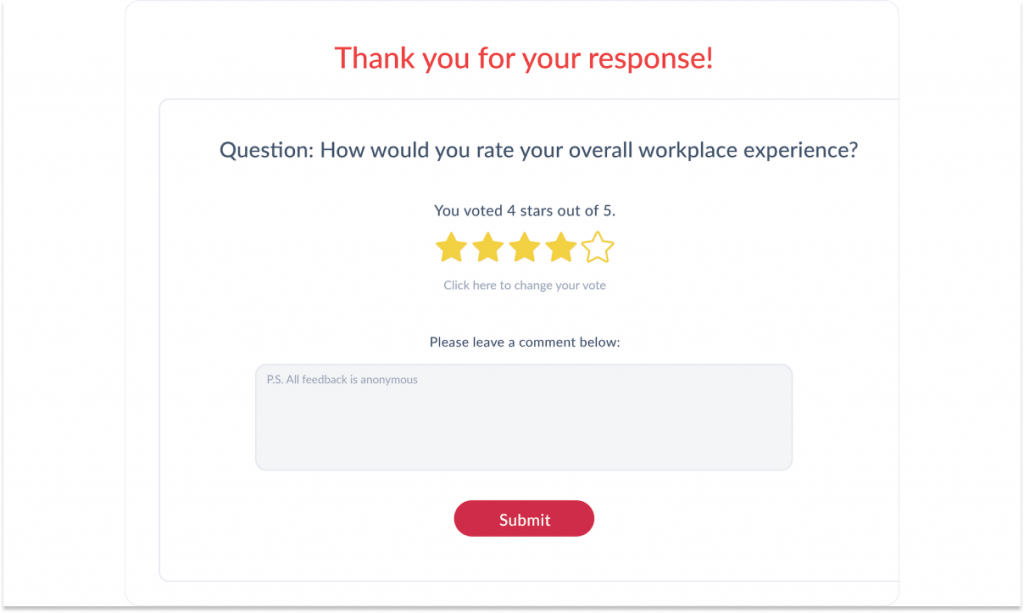
Create online surveys where employees can share their thoughts without attaching their names. Ensure you choose a platform that guarantees anonymity so employees feel safe and secure in providing their honest opinions. Use a mix of open-ended and multiple-choice questions to understand their experiences comprehensively.
2. Digital Suggestion Boxes
Set up a digital suggestion box on your company’s intranet or internal communication platform. Employees can submit ideas, concerns, or feedback anytime. This method is excellent for ongoing feedback and can be monitored regularly to address issues promptly.
3. Anonymous Chatbots
Implement a chatbot or communication tool on your internal website. This chatbot can prompt employees for feedback regularly or after specific events, like project completions or meetings. Chatbots’ anonymity encourages employees to be candid and helps gather real-time insights.
4. Email Feedback Systems
Create an anonymous email system where employees can send feedback without revealing their identities. This can be as simple as setting up a dedicated email address that strips out identifying information before the feedback is forwarded to management. It’s an effective way for employees to share detailed thoughts and suggestions.
5. Regular Feedback Sessions
Schedule regular feedback sessions where employees can submit their thoughts anonymously before or during the meeting. Use anonymous submission tools to collect feedback on various topics, from workplace culture to project management.
Common Mistakes to Avoid While Collecting Anonymous Feedback
The key to getting the most out of your anonymous feedback surveys is to minimize errors as much as possible. Here are the common pitfalls to avoid when you are collecting anonymous feedback from participants:
- Lack of Anonymity Assurance: Remember to assure employees that their feedback is truly anonymous. Protect their privacy to build trust and encourage honesty.
- Complicated Feedback Process: Avoid making the feedback process too complex or time-consuming. Keep it simple and user-friendly to encourage more participation.
- Ignoring Feedback: What use is feedback if you don’t utilize it to improve your offerings? Address the feedback and communicate the steps you’re taking to make improvements to show employees their input is valued.
- Infrequent Feedback Requests: Only seeking feedback occasionally can miss out on ongoing issues or trends. Regular feedback collection helps to stay updated on employees’ concerns and sentiments.
- Biased Questions: Avoid designing surveys with leading or biased questions. Use neutral, open-ended questions to get genuine insights.
- Poor Communication About the Process: Don’t forget to clearly explain the purpose and process of collecting anonymous feedback. Good communication will result in higher engagement.
- Overlooking Positive Feedback: Focusing solely on negative feedback and ignoring positive comments can create an unbalanced view. Recognize and celebrate the positive aspects highlighted by your survey takers.
- Inadequate Follow-Up: After collecting feedback, contact the survey respondents and share the actions taken based on their feedback to build trust and show responsiveness.
- Technical Glitches: Take care of the technical aspects of your surveys and ensure the platform used is reliable. Technical issues can frustrate participants and lead to incomplete feedback.
- Not Segmenting Feedback: Don’t treat feedback as a one-size-fits-all solution. Segment feedback to understand different perspectives and address specific departmental or role-based issues accordingly.
Top 6 Features to Look for When Selecting Anonymous Feedback Tools
Here are a few points to remember while choosing anonymous feedback software for your organization to make decision-making effective and easy:
Ease of Use: The anonymous feedback survey platform should be user-friendly and easy to navigate, making it simple for employees and users to access and complete the questionnaire.
Customization: It must allow many customization options to personalize the survey to suit the organization’s or team’s specific needs.
Security: The anonymous feedback tools should prioritize confidentiality and data security of employee responses. Published surveys must also comply with data protection and privacy policies.
Diverse Question & Survey Types: An online survey tool should allow various question types (open-ended, multiple-choice, rating scales, etc.) and surveys (NPS, CSAT, CES, etc.) to capture different kinds of feedback to help you collect diverse insights.
Reporting & Analysis Features: An anonymous feedback tool must have advanced reporting and robust analysis features. These features allow users to analyze feedback and gather insights to drive decision-making.
Integration Capabilities: Anonymous feedback tools should integrate with other productivity tools commonly used by businesses (Slack and Google Suite), making it easier for respondents to access and complete the survey. It’s a plus if the tool works on both Mobile and Desktop.
Collect Unbiased, Authentic Feedback in Minutes!
Honest feedback is like gold. It helps you grow, improve, and make smarter choices. Using the tips and tools in this guide lets you get the real scoop from your team and customers, even when it’s tough to hear.
Creating a safe space where people feel comfortable sharing their thoughts is critical. So, start putting these strategies into action today. Try out the tools, have those conversations, and see how honest feedback can transform your business. With platforms like Qualaroo at your disposal, capturing those valuable insights has never been easier.
Remember, the people around you hold a treasure trove of knowledge – all you have to do is tap into it.
Frequently Asked Questions
What are the advantages of anonymous employee feedback?
Anonymous feedback tools help gain access to honest insights, boost participation, and identify hidden issues. They foster trust, improve employee engagement, and ensure data confidentiality, leading to better decision-making and a more positive workplace culture.
What are the pros and cons of anonymous surveys?
Anonymous surveys promote candid responses, increasing participation and uncovering hidden issues, fostering trust and creating a psychologically safe environment. However, they can also hinder follow-up communication, potentially lead to misuse, and make addressing individual concerns difficult, with the downside of losing the personal touch.
 Tips
Tips
We’d love to hear your tips & suggestions on this article!
FREE. All Features. FOREVER!
Try our Forever FREE account with all premium features!


 We'd love your feedback!
We'd love your feedback! Thanks for your feedback!
Thanks for your feedback!


